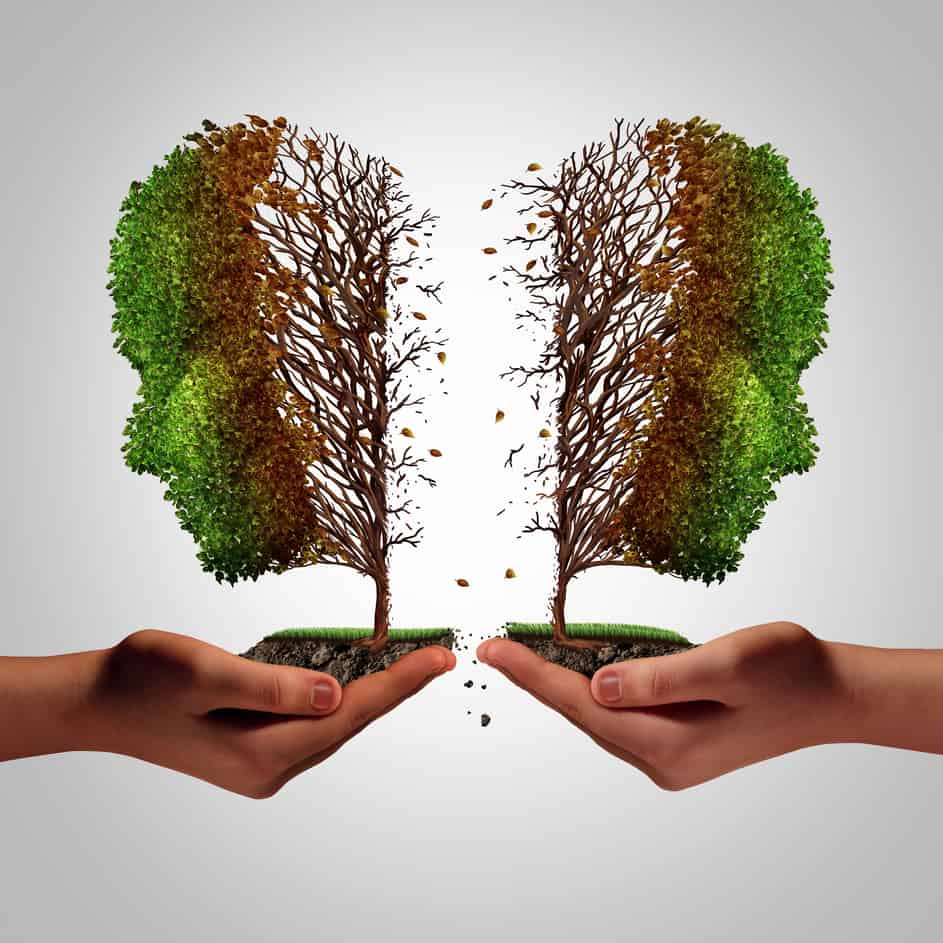“Authorities have repeatedly proposed that treatment programs should address the physiological, psychological, and social dimensions of the functioning of the client, but such a comprehensive approach is not yet routinely demonstrated in the practice of treatment of mental illness and substance abuse disorders.” ~ T. Watkins, A. Lewellen, and M. Barrett, Dual Diagnosis: an Integrative Approach to Treatment Addiction is a complicated disease that is caused by a number of factors – biological, environmental, social, chemical, psychological, and behavioral. It is for precisely that reason why there is no single, “one-size-gets-all” treatment approach that will work for 100% of the people, 100% of the time. It is also a disease that can cause or exacerbate other physical or mental health conditions, such as heart disease, cancer, diabetes, anxiety, PTSD, and depression, to name a few. These psychological disorders are intricately intertwined with the addictive disorder, because each is a factor in the development of the other, and each can worsen the other. When a person has such co-occurring disorders, it is referred to as a dual diagnosis. Dual diagnosis requires specialized, the “whole person” integrative treatment if recovery is to be successful.
Statistics about Co-Occurring Disorders
Alcoholism and drug abuse manifest simultaneously with serious psychiatric conditions quite often:
- Approximately 50% of people with a mental illness also have a Substance Use Disorder (SUD).
- Greater than a third of alcoholics and more than half of drug addicts have at least one psychiatric condition.
- The majority of people with SUDs – 70% of males and 80% of females – struggled with anxiety they began abusing drugs and/or alcohol.
- A person diagnosed with anxiety as a teenager has a risk of addiction that is 3.5 times higher than the general population.
- Schizophrenia patients have a risk of addiction that is 4.5 times higher.
- Individuals with bipolar disorder are FIVE TIMES MORE LIKELY to abuse alcohol or drugs.
- More than half of PTSD patients abuse alcohol and greater than a third abuse drug.
- 53% of male substance abusers – and 43% of female substance abusers – experienced a major depressive episode or they started abusing alcohol or drugs.
What Is Integrative Treatment for Addiction and How Does It Help?
Before discussing what makes integrative treatment so effective, you first must have a brief understanding of the other methods some addiction recovery centers used to treat co-occurring addictive psychiatric conditions:
- Sequential treatment – The patient is treated for first one disorder, and then the other. The disadvantage of this treatment strategy is that one causal, influential condition is still active and untreated, and can thereby interfere with the successful treatment of the other.
- Parallel treatment – The patient is treated simultaneously for both disorders, by separate providers. The disadvantage of this treatment strategy is that each provider may have their own conflicting therapeutic approach, and the lack of cooperative communication can impede progress during recovery.
An integrative treatment approach treats both disorders primary condition, and both are treated simultaneously by treatment providers working together under the cooperative umbrella of a single strategy, typically working for the same rehab facility. Integrative treatment plans employ a team of professionals who address the addictive and psychiatric disorders on multiple levels, thereby maximizing the chances of successful recovery from both.
What Would an Integrative Addiction Recovery Team Look Like?
Successful integrative treatment hinges upon cooperation between specialists, the patient, and even their support system:
- Case manager – coordinates all services
- Physician – addresses the biological components of the disorders, usually helping correct symptoms with pharmacological intervention
- Therapist – addresses the emotional/psychiatric components of the disorders
- Substance abuse counselor – educates the client about the causes of addiction and teaches practical coping strategies
- Nutritionist – helps repair the damage caused by active addiction and coaches the patient healthy eating habits that can prevent relapse
- Holistic service providers – introduces the patient to nonmedical therapies that have proven beneficial – meditation, yoga, art/poetry therapy, exercise, etc.
- 12-Step sponsor – offering peer support and guidance
- Social workers/Probation officer/Judge – providing accountability and referrals to needed services – including parenting, housing assistance, and vocational rehabilitation
- Family members – providing emotional support
- The patient – active engagement in one’s treatment plan is one of the cornerstones of recovery
It is the multi-layered nature of addiction that necessitates such a comprehensive approach by such an eclectic team. Each person on the team makes their contribution to the greater whole. The approach is integrative because everyone is working cooperatively within the framework of a shared vision. The best addiction recovery programs will conduct a detailed intake evaluation and client history, and, with the collaboration of the client, they will be able to craft a personalized treatment plan that will address a person’s unique needs as an individual. And it is that focus on the individual that maximizes their chances of a successful, long-lasting recovery.

